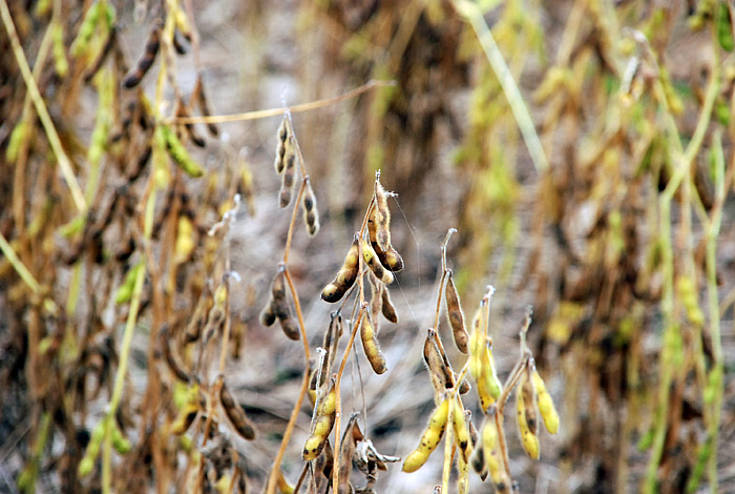During thousands of years, humans have experienced different ways of inhabiting a territory and living in community, of finding and then producing food, of creating languages to describe internal and external worlds and sharing them with others, of building houses and infrastructures, of transmitting acquired experience to new generations, of creating institutions to regulate life in community. Current life forms are a product of cultural evolution.
Only eight thousand years ago, when it was discovered that collected seeds would grow into plants, similar to those that grow in the wild, cultivation and domestication of vegetal species started. This situation made the development of a horticulture economy possible. After this, Homo sapiens developed cultivation techniques, producing a change in the relation existing between life and nature.
After domesticating plants, humans learned to domesticate animals, changing from hunters and collectors into peasants. Three thousand years ago, the invention of plowing, that uses other source of energy apart from its own to remove soil, allowed the emerging of an agriculture economy. At that point, a growing fragment of the population started to do something different from just obtaining food. Industrial economy emerged a couple of centuries ago and the generalization of the urban lifestyle was then created.
Almost 250.000 plants are trade in the world, most of them included in our diet. In a limited area in terms of botanic diversity such as North America, the natives used to eat 1,112 different species, and still today, Bushmen in the arid regions of South Africa use 85 wild vegetables in a normal meal.[1]
Cultivation and its techniques have changed to fit this reality, and humans have only incorporated less than 1,500 pieces of food in the so called formal agriculture. At the end of the 1920s, a typical grocery store in Canada would offer 900 different products. Today, an average store has over 12,000 products, including more than 50 different brands of cereal for breakfast. However, only 30 crops provide 95% of the human nutritional requirements (three-quarters of the diet are based on just eight crops), and 75% of the consumption of cereals is reduced to rice, wheat and corn.
Homogenization Vs diversification
Important restrictions to production have increased the risk of vulnerability due to the big genetic uniformity commercial homogenization has imposed. This occurs although agronomists are aware of this situation.
In November of 1979, genetists K.E. Prasada Rao and M.H. Mengesha visited Sudan, a possible center of the origins of sorghum, looking for the wild relatives of this variety of grass. At the end, they did not find the hegaris variety in any the samples taken, and they hardly found the zera-zera variety "almost extinct", close to Damazin.
Sorghum is very important in tropical and subtropical countries and zera-zera is very appreciated due to its characteristics and for being one of the bases of most of the modern hybrid varieties. "Botanists of germplasm are shocked due to the magnitude of the genetic erosion of primitive cultivars and the situation is more alarming for wild sorghum," asserted Rao and Magesha.
During the last 50 years, more than 30,000 different local varieties of rice have been cultivated in India. However, this situation has changed dramatically in the last 15 years. The director of agricultural research of the Institute of India in New Delhi, H.K Jain, predicted 25 years ago that this big number of varieties of rice would be reduced to just 50 varieties in this period of time. From these 50, the first ten would represent almost three quarters of the total amount of rice in the subcontinent.
Consumers have been educated by the market to buy "natural" products, which are absolutely normalized and standardized in shape, taste and color. Each time, commercial possibilities of non- favored species are reduced in order to produce massively, leaving self consumption to isolated places or to those which are not part of the global tendencies.
Tension between globalization and productive localization
The tendency to monoculture dominates global agriculture. Crops of just one species and one variety represent a potential phytosanytary risk that, as a plague, could affect and boost the spreading of the disease.
Experience shows that when seeds in a crop are taken away from their genetic "country", a reduction of the diversity is experienced. This situation had led to several disasters. A century ago, the rediscovery of Mendel"s laws about genetics made the science of modern plant breeding possible, creating a few new varieties of high performance crops, but eliminating, in a few decades, the little genetic diversity that existed in the north hemisphere.
New varieties were scientifically "designed" to satisfy the demanding requirements of mechanical harvesting, milling, fermentation and baking, but their uniformity has increased the risk of disease. The producers of "improved" seeds considered a trip to ancient genetic diversity centers in Africa, Asia and Latin America necessary to guarantee the success of their new varieties. The so called "granary" of nations is rich in grain but poor in genes, and, as a result, it has become totally dependent of the third world agriculture for the long term survival of western agriculture.
The reasons exposed here are to consider the "obstacles" rural practices experience from a different perspective. We have to find solutions to the challenges that ecological, biodynamic, native, family, and rural agricultures face, as well as for those challenges natural agriculture has. All these practices are trying to achieve equilibrium with the ecosystem and, at the same time, sustainable agricultural productions for different regions in the world, despite of current tendencies that jeopardize food security.
Antonio Elizalde,
Sociologist and Ph.D in Human Development and Social Participation
Rector Emeritus of Universidad Bolivariana de Chile
[1] Development dialogue. The Law of the Seed- Another Development and Plant Genetic Resources, 1983, pp. 1-2.
 Correo Electrónico
Correo Electrónico
 DNINFOA - SIA
DNINFOA - SIA
 Bibliotecas
Bibliotecas
 Convocatorias
Convocatorias
 Identidad UNAL
Identidad UNAL



